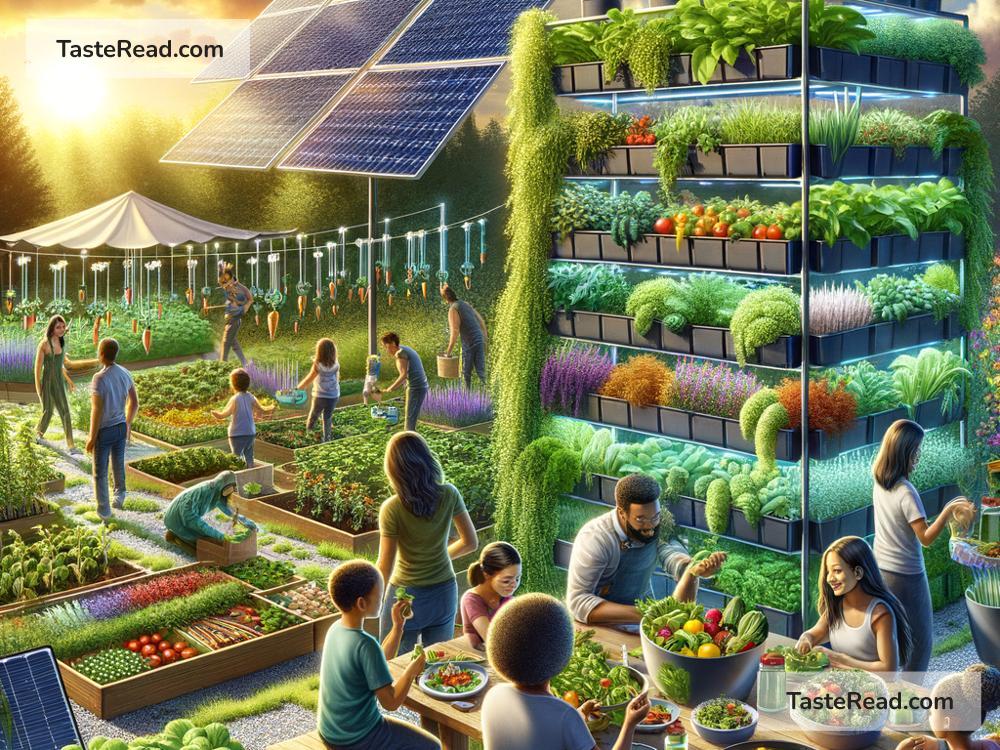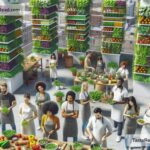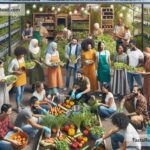The Future of Food and Sustainable Community Models
The way we grow, share, and eat food is changing. Around the world, people are thinking about how we can make food and communities more sustainable for future generations. As the global population grows and the planet faces challenges like climate change, resource depletion, and inequality, finding better ways to produce and use food is crucial. Fortunately, innovations in food systems and community models are showing us that a brighter, greener future is possible. Let’s explore what this future might look like.
The Food We Eat is Changing
One of the most exciting changes in the future of food is the way it’s produced. Scientists, farmers, and inventors are working on creative solutions to feed the world sustainably.
-
Plant-Based and Alternative Proteins
A growing number of people are choosing plant-based diets, not just for health reasons but also to save the environment. Producing meat requires lots of land, water, and energy. It also creates pollution. Plant-based meat alternatives, made from ingredients like soy, peas, and mushrooms, are becoming popular. Another breakthrough is lab-grown meat, made from real animal cells but without killing animals. These options reduce the negative impact on the planet and could become mainstream in the future. -
Vertical Farming
Traditional farming uses large amounts of land and water. But what if we could grow food up instead of out? That’s the idea behind vertical farming, where crops are grown indoors in stacked layers using LED lights. It uses less space, water, and pesticides, and it allows food to be grown right where people live, even in big cities. This means fresher food and fewer emissions from transporting it. -
Precision Agriculture
Technology like drones, sensors, and AI is helping farmers grow food more efficiently. Precision agriculture uses data to figure out exactly how much water, fertilizer, and care each plant needs. This reduces waste, saves money, and protects the environment. -
Insects as Food
While it may sound unusual to some, eating insects is already common in many parts of the world. Insects like crickets and mealworms are rich in protein and require very little space and resources to farm. As food demands increase, insect-based snacks and meals could become a sustainable addition to diets worldwide.
Supporting Local and Sustainable Communities
Food isn’t just about what we eat—it’s about how we connect with the people around us. Sustainable communities are creating new ways to share resources and support each other. Here’s how:
-
Community Gardens and Urban Farming
Many communities are transforming unused land into gardens for growing fruits, vegetables, and herbs. These gardens are run by locals who work together to plant and harvest food. Not only does this provide fresh produce, but it also strengthens community bonds and teaches people about sustainable agriculture. -
Farm-to-Table Movements
Buying food directly from farmers is another trend shaping the future. Farmers’ markets and subscription services, called Community-Supported Agriculture (CSA), let people get fresh food while supporting local farmers. This cuts down on packaging and food miles, making the system greener. -
Sharing Economies
Sharing economies are another way communities can be more sustainable. For example, food-sharing apps help people donate surplus food to neighbors instead of throwing it away. Meanwhile, co-op grocery stores allow members of a community to own and operate their own markets, reducing costs and prioritizing local products. -
Zero-Waste Communities
Some communities are organizing their lives around the idea of producing no waste. They focus on recycling, composting, and reusing materials so that nothing ends up in landfills. This mindset also applies to food—some places have programs to turn food scraps into fertilizer for local farms or energy to power homes.
The Role of Technology in the Future of Food
Technology is at the heart of innovation in food and community systems. Apps, AI, and digital platforms are making it easier to solve problems and bring people together.
For example, apps like Too Good to Go help restaurants and supermarkets sell leftover food at a discount, reducing waste and helping people save money. Blockchain technology is helping track where food comes from, giving us more transparent supply chains. AI is helping scientists predict changes in the climate so farmers can adapt their practices.
Even robots are playing a role. Some companies are building agricultural robots to plant seeds, check crops for disease, and harvest food—making farming faster and more precise.
Why This Matters
Sustainability in food and communities isn’t just about protecting the planet—it’s also about fairness and health. Current food systems often disadvantage poor communities and rely on hard-to-replace resources. By making smarter food choices and supporting local economies, we can create a future where everyone has access to fresh, healthy food.
The good news is that small changes today can lead to big results. Whether it’s starting a garden, reducing food waste, or choosing plant-based meals, every action counts.
A Future We Can All Share
The future of food and sustainable communities is bright. There will be challenges, but by working together, using innovative solutions, and respecting the planet, we can build a world where food systems are fairer, healthier, and greener. Whether through advanced farming methods, sharing economies, or technology-driven solutions, we all have a role to play in shaping this future.
After all, food isn’t just about survival. It’s about caring for ourselves, our neighbors, and the world around us. Together, we can create a sustainable future filled with delicious possibilities.


